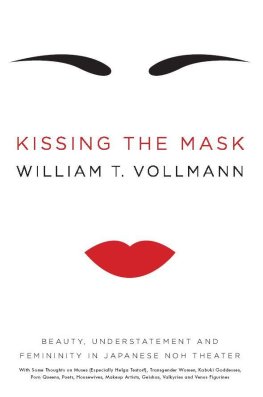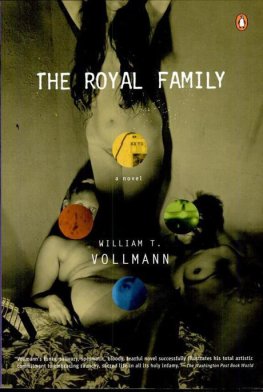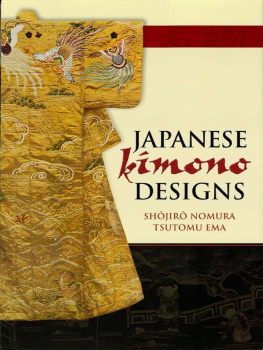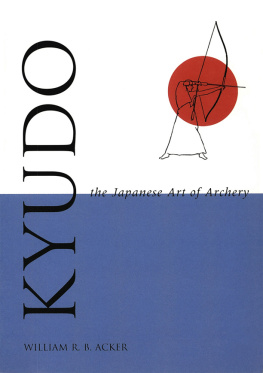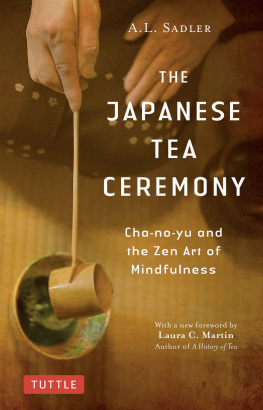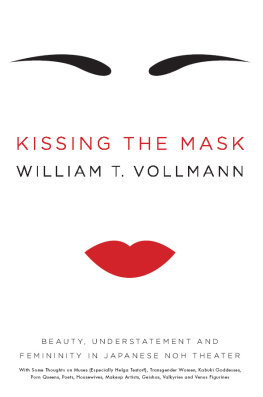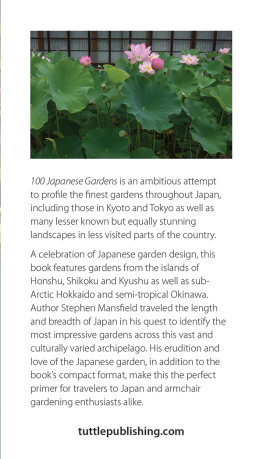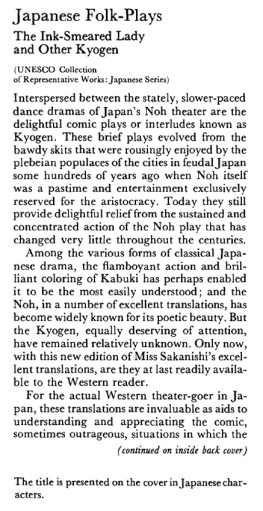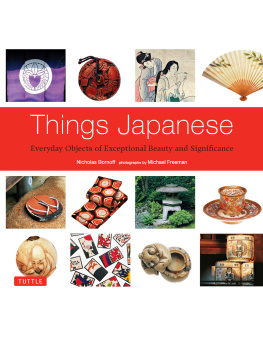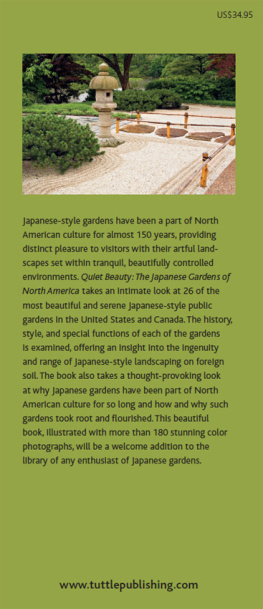William T. Vollmann
Kissing the Mask: Beauty, Understatement and Femininity in Japanese Noh Theater, with Some Thoughts on Muses (Especially Helga Testorf), Transgender Women Geishas, Valkyries and Venus Figurines
For Kawai Takako, interpreter, fixer,
sweethearted friend
What am I to do with you,
semblance of the laurel in the moon,
you whom I see but cannot touch?
PRINCE YUHARA, poem to a young woman, middle Nara era
Dresses make the lady,
if one has the figure.
CHARLOTTE VON MAHLSDORF (born Lothar Berfelde), bef. 1992
A woman never imitates herself.
ZEAMI MOTOKIYO, 1428
The images were not available for the electronic edition.
[Part title.] Geisha at her makeup table, 2008. Detail.
[Frontis 1.*] The maiko Konomi-san, Gion quarter, Kyoto, 2006.
[Frontis 2.] The geisha Suzuka-san, Higashi quarter, Kanazawa, 2008. (For pictures of the process by which she took on this appearance, see the part title and pages 217-21.)
[Full title underlay.] Paints and palates for Noh masks. Atelier of the renowned Noh mask carver Ms. Nakamura Mitsue. Kyoto, 2004.
5 Detail of ko-omote on page 81.
7 Sketchmap of frequently mentioned Japanese places.
13 Mr. Umewaka Rokuro prepares to perform the role of Shuntoku-maru, in the mirror room of Yasukuni Shrine, Tokyo, 2002. Here the fit of his kimonos is being adjusted.
14 He is now masked (eponymously, in a Shuntoku-maru). The wig is made just so.
15 Shortly before going onstage, Mr. Umewaka contemplates his image in the mirror.
24 The new-half Miss Tosaka. Kabukicho, Tokyo, 2002.
32 The acclaimed mask carver Mr. Otsuka Ryoji with one of his kyogen masks. As you can see, these can be much more whimsical than Noh masks. Mr. Otsuka is particularly well known for such fantasies in wood, many of which are original to him. My photographs of him were taken in his atelier in Shimada Prefecture, 2002.
35 Waka-onna and ko-omote, Umewaka family collection, Tokyo, 2002. The man in the background is one of Mr. Umewakas apprentices.
41 Mr. Umewaka at home. Tokyo, 2002.
48 Sketch of an audience at a Noh performance, probably in Osaka, 2004. In the left one can see the bridge and the rainbow curtain.
53 Noh performance, viewing the center front stage. The shite is in the foreground at stage right; the chorus in the background at stage left; and to their right, in front of the pine tree mirror board, are the flutist (stage left), then the two drummers (kotsuzumi and okawa drums). To their right, part of the bridge can be seen.
55 The okawa drummer in a performance of Semimaru. This large hourglass drum is also called an otsuzumi.
58 A Noh robot in the midst of its mechanical performance as the shite of an abridged Izutsu. Noh Museum, Sado Island, 2008.
60 Mr. Mikata Shizuka performs part of the Yoroboshi Noh dance for me in his teaching studio in Kyoto, 2004. In a modern-day performance the actor would actually be wearing a specific Yoroboshi mask.
71 Diagram of female mask hairstyles, after Nakanashi and Komma. Faces are generalized and do not indicate any particular mask type. Only the most conventionally alluring masks are represented.
77 Unfinished zo-onna mask and its pattern paper. Ms. Nakamuras atelier, 2004
78 Another of Ms. Nakamuras unfinished masks, a magojiro, 2004.
79 Ms. Nakamura with a pair of masks, 2004.
80 Mr. Umewakas apprentice with a ko-omote mask. I have been asked to note here that this scene was posed with the dark cloth at my request for illustrative purposes only, and does not represent any approved Noh gesture or movement. Photographed in Mr. Umewakas studio in Tokyo, 2002.
81 The apprentice holds the mask to his face. (The same caveat applies.)
82 Detail of ko-omote on page 80.
83 Ms. Nakamura by her wall of masks. Kyoto, 2004.
99 Geisha festival dance, Ponto-cho. Kyoto, 2005.
104 Mr. Mikata in the mirror room of Junenji Temple, placing to his face the ko-omote he used in this place on the previous evening to perform Michimori. Kyoto, 2006.
114 The late Mr. Kanze Hideo, during an interview on the day after a Takigi-Noh performance. Kyoto, 2005.
119 Comparison-sketch of facial proportions: Ms. Aya Kudo, S & M porn model, vs. a zo-onna carved by Ms. Nakamura Mitsue.
122 Sketch-diagram of the five main gender-specific measurements, simplified from a diagram in Heath, who (sourcing J-M. Fellous) actually shows us twenty-four indicators of gender discrimination and prediction of the basis of facial metric information, but he singles out the most important five to be substituted into the following masculinity index equation.
125 [Ms. Nakamuras sketch.] Comparison of facial proportions: Generalized Utamaro bijin-ga face vs. generalized Noh mask.
129 Vulva, eastern California, 2008.
144 Kiss me, wont you? Tokyo, ca. 2004.
179 The geisha Masami-san bangs the drum. Kanazawa, 2008.
181 Tortoise-shell hair ornament for sale at the inconspicuous little shop in Kyoto patronized by the Gion geishas mentioned in this book. It was shockingly expensive; few non-geishas could have afforded it. Hence in the text I have taken the minor speculative liberty of captioning this object geisha hair ornament. The same goes for the caption to page 189 (below, this page).
188 Facsimile of the lyrics to Black Hair, written out for me by the ochaya-san, Ms. Imamura, in calligraphy of refined elegance, 2006. The words were so archaic that my interpreter, a highly educated woman of late middle age, had recourse to her mother for help.
189 More geisha hair ornaments.
194 The renowned geiko Kofumi-san. Gion, Kyoto, 2006.
195 The maiko Konomi-san. Kofumi-san is her teacher. Gion, 2006.
196 Two instants of Kofumi-sans dance. On this occasion (Gion, 2004) she was not wearing her wig and oshiroi makeup.
197 Konomi-san dances Fan to You. At lower left in the first photograph we can see Danyu-san playing the shamisen. Gion, 2006.
198 Another instant of Kofumi-sans performance of Black Hair, and of Konomi-sans of Fan to You. In both photographs Danyu-san plays the shamisen on the left.
200 Sketch of Gion Shrine, also called Yasaka Shrine. Kyoto, 2006.
203 Masami-san bows after she has danced for me. Higashi, Kanazawa, 2008.
207 Mannequin legs displaying panty hose. Bogot, Colombia, 1999.
210 Mannequin. Mexicali, Mexico, 2005.
217 The geisha Suzuka-san begins making up for the evening in tiny dressing room of her ochaya in Kanazawas Higasha pleasure district. All photos of her were taken in 2008.
218 Now she has applied her white oshiroi and begun touching up her eyes and mouth. The condition under which I was allowed to photograph her was: no representations of her incompletely made-up face could be published. I love this portrait very much and am very grateful to her for relenting.
219 Her makeup is finished. She has changed into her formal kimono. The obi-tier and the ochaya-san now pull her tight.
220 Suzuka-san lowers the heavy custom-made wig onto her head.
221 Now she is ready.
226 My two makeovers by Yukiko. Tokyo, 2008. See also page 239.
231 Sketch of onnagatas. Tokyo, 2008.
232a Facade of Kabuki theater showing actors currently performing. Kanazawa, 2008.
232b Mr. Ichikawa Shunen, onnagata. He is relatively young but already quite well known. Tokyo, 2008.
236 Basic Kabuki makeup for an onnagata.
239 My makeover by the T-girl Katy. Los Angeles, 2008. The immediately following portraits of her are from the same period.

